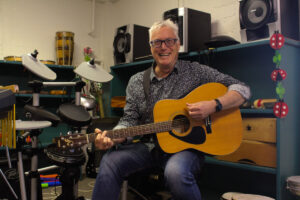Farming couple praise once-a-day milking
After 30 years of twice-a-day trips to the cowshed former Okoroire farmers Heather and Ian Mitchell have welcomed the concept of once-a-day milking.
After 30 years of twice-a-day trips to the cowshed former Okoroire farmers Heather and Ian Mitchell have welcomed the concept of once-a-day milking.
The Mitchells said they were relaxed about the transition from twice-a-day (TOD) to once-a-day (OAD) milking. They knew they had the option to reverse the decision if it did not suit them, Mrs Mitchell said.
“We decided that we didn’t have a lot to lose really. If it hadn’t of worked out it would have been easy to go back to TOD milking. This thought made us quite relaxed about the whole situation.”
Originally the Mitchells became interested in OAD milking because of the accompanying lifestyle benefits.
“We were attracted to the lifestyle, we wanted a change. We also wanted to cut back our work load without leaving the farm – OAD was the best option for our farm,” Mrs Mitchell said.
OAD milking means that farmers only have to see the inside of their cowshed at any one time of the day. Less time is spent dealing with cows that, in turn, spend more time relaxing in paddocks instead of standing in yards.
Mrs Mitchell said while some struggled to understand the logic behind OAD milking, production falls were “a minor speed bump” easily overcome.
“We had no idea how much you can save when milking on OAD. The biggest barrier to overcome is production loss. Of course there is going to be a loss to start with but you overcome this when you realise how much you are saving by cutting down on expenses such as power and other costs.”
Better herd condition, slower stock rotation, and better fertility are other perks OAD farming offers, Mrs Mitchell said.
“You are busy up until around lunch time then you have the afternoon to do as you please. If you want to make a getaway it is easy to find a relief milker because the OAD milking is so appealing. Better stock condition was a huge benefit as well as lower bills and costs; we were using half the power to operate our shed. We also had a slower stock rotation resulting in more pasture and our cows were getting in calf a lot easier.”




